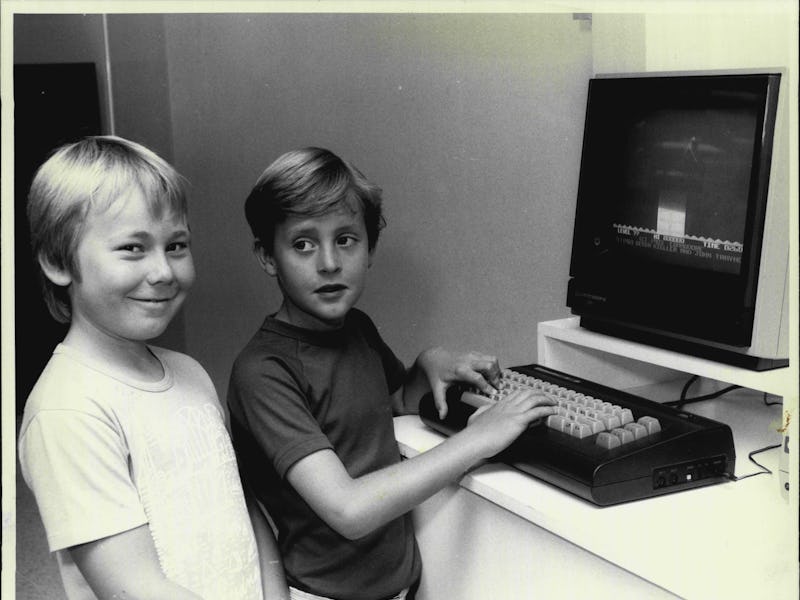40 Years Ago, One Addictive Computer Game Pioneered A Subgenre
Before Street Fighter, Commodore gave us The Way of the Exploding Fist.

In 1985, the idea of mashing buttons next to your friend while two digital characters pummeled each other wasn’t exactly commonplace. While 1976’s arcade game Heavyweight Champ and 1984’s Karate Champ came first, the idea of a fighting game being something you could do at home was truly pioneered in the summer of 1985 by a home computer game called The Way of the Exploding Fist. If that title is meant to sound like a Bruce Lee movie you just never got around to seeing, that’s totally the intention.
Released for the Commodore 64 and other platforms in late June 1985, by July and August, the game was a bestseller, especially in the United Kingdom. But why was Exploding Fist so fantastic? Well, if you could afford two joysticks to hook up to your computer, you could recreate a karate battle, just one year after Karate Kid hit theaters. Two years later, when Street Fighter hit arcades, Exploding Fist would fade from the cultural memory, but again, in terms of something gamers could experience at home, it was groundbreaking.
One of the most interesting things about The Way of the Exploding Fist isn’t just the fact that it took arcade gameplay to a home computer, but that the music created a kind of immersive feeling. Neil Brennan’s score might seem over-the-top today, but the idea that a martial arts game would even attempt to emulate the sonic experience of a martial arts film was, again, something that was relatively new.
Exploding Fist also featured different backdrops throughout the game, as players moved through various levels. This was an early example of a kind of reward for gamers. Essentially, getting to different stages in the game meant you could see more of the world, even if it was just brightly colored backdrops inspired by Karate Champ. Previously, the designer of this game, Gregg Barnett, had converted a Hobbit game to work with the Commodore 64 computer, and some of the rolling hills and backdrops, though obviously meant to replicate Japanese locales, also very much have a bit of a fantastical, Middle-earth feeling.
The colorful characters of Street Fighter and Mortal Kombat were still several years away, and so, looking back on Exploding Fist feels quaint now, simply because the fighters that the player selects don’t have over-the-top personalities. For the time, the mechanics of the game and the novelty of playing it at home were what made it stand out.
Would fighting games have progressed without Way of the Exploding Fist? Certainly. This game was groundbreaking for all the reasons mentioned, but it is possible to imagine an alternate reality where a different game became the true breakout in terms of fighting games you could play at home. But what’s nice about the timeline we do live in is that Exploding Fist has a kind of quiet dignity to it.
Gameplay from Way of the Exploding Fist.
It’s not particularly bombastic or showy with its gameplay, and the moves of the fighters feel appropriately elegant for the type of martial arts game its trying to be. It’s not that the game holds up to modern standards. It doesn’t. But you can see why its fairly simple approach was so addictive back in the day.
Because back when games like Karate Champ required you to put another coin in the arcade, the triumph of Exploding Fist was that you could keep fighting, and keep getting better, for as long as you wanted.